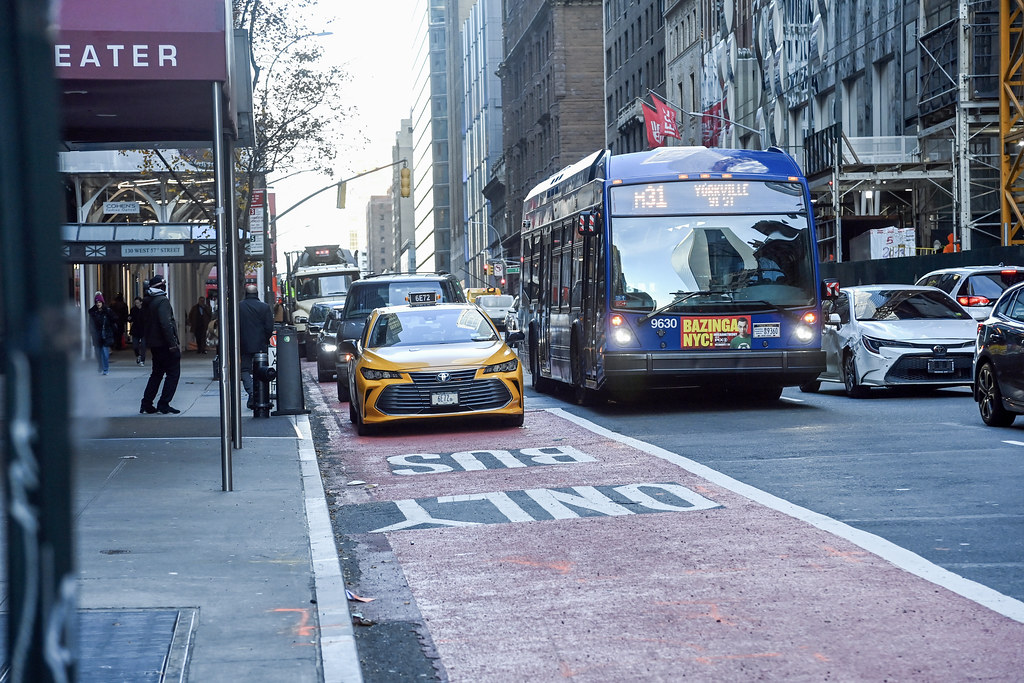Top Eco-Friendly Commuting Solutions
As concerns about climate change and environmental impact continue to rise, more and more people are seeking eco-friendly ways to get around.
With transportation being one of the largest contributors to carbon emissions, finding sustainable commuting solutions is a great way to reduce your personal footprint.
Doesn’t matter if you need to travel across the city or live just a few blocks away, there are plenty of options available that are easy, cost-effective, and good for the planet.
Let’s see which exact greener-than-average solutions can help you get where you need to be in a big modern city.
1. Cycling
There’s a reason why cycling remains one of the most popular eco-friendly commuting options – it’s simple, efficient, and great for the environment.
A bicycle doesn’t rely on fuel, so you’re cutting your carbon emissions to zero the moment you hop on. Plus, it offers the added benefits of keeping you physically fit and reducing stress levels.
Many cities are making cycling even more accessible by adding bike lanes, rental programs, and bike-sharing systems, so you don’t even need to own a bike to get started.
If you’re commuting within a few miles, cycling can be faster than driving through heavy traffic, and you’ll never have to worry about parking.
Electric bikes (e-bikes) are also growing in popularity, offering a bit of extra help for longer trips or hilly routes while still being much greener than a car.
For those concerned about the weather, consider investing in weather-resistant gear or a foldable bike that you can bring indoors easily.
Whether you’re riding to work, the grocery store, or just around town, cycling is a fantastic way to cut down on your carbon footprint and enjoy the ride.
2. Public transportation
Public transportation, whether it’s buses, subways, or trains, is one of the easiest and most accessible ways to commute more sustainably.
When you ride public transit, you’re sharing a vehicle with dozens (if not hundreds) of other people, which greatly reduces the overall carbon emissions compared to each person driving separately.
Many modern cities are transitioning to electric or hybrid buses, and trains have long been recognized as one of the most energy-efficient modes of travel.
Even if your public transportation system still uses diesel, the emissions per passenger are far lower than if each person were driving their own vehicle.
One of the great perks of public transportation is that it’s cost-effective and convenient. You don’t have to worry about parking, maintenance, or fuel costs, and you can often use your commute time to relax, read, or get some work done.
Plus, with the growing availability of apps and real-time tracking, it’s easier than ever to know when your next bus or train is coming, making your journey smoother and stress-free.
If you live in a city with a robust public transportation system, using it for your daily commute is one of the simplest ways to lower your carbon emissions without making any major lifestyle changes.
3. Carpooling
This is another great option for those who want to reduce their environmental impact without giving up the comfort of a car.
By sharing a ride with others, you’re effectively cutting the number of cars on the road, which not only reduces traffic congestion but also lowers the total emissions.
Whether you’re carpooling with coworkers, neighbors, or friends, it’s an easy way to make your commute more eco-friendly without any significant changes to your routine.
Many companies even offer incentives for employees who carpool, such as preferred parking or reimbursement for shared gas expenses.
Technology has made carpooling more convenient than ever. Apps like Waze Carpool and BlaBlaCar connect people heading in the same direction, making it simple to find a carpool buddy even if you don’t know anyone nearby. By filling up more seats in a vehicle, you’re cutting down on emissions per passenger and contributing to a cleaner commute.
Plus, carpooling can make your ride more enjoyable. With someone else to chat with or share the driving duties, you’ll find that commuting doesn’t have to feel like a solo chore.
And let’s not forget – splitting gas and parking costs saves you money, making this a win for both your wallet and the planet.
4. Electric vehicles
If you still need the flexibility of having your own vehicle but want to make a more eco-friendly choice, electric vehicles (EVs) are the way to go.
EVs produce zero emissions while driving, and with renewable energy sources like solar or wind powering your charging station, you can drastically reduce your carbon footprint.
Over the past decade, electric vehicles have come a long way in terms of affordability, range, and charging infrastructure. What once seemed like a futuristic option is now a practical and sustainable commuting choice for many drivers.
Charging stations are becoming more common in urban areas, and many EVs now boast ranges of 200 to 300 miles on a single charge, making them suitable for longer commutes as well.
Hybrid cars are also a great middle ground if you’re not ready to make the full switch to electric. They combine a traditional gas engine with electric power, reducing emissions while still offering the convenience of a gasoline vehicle when you need it.
While EVs can still be a bigger upfront investment, the long-term savings in fuel costs, tax incentives, and lower maintenance expenses make them a smart choice for the eco-conscious commuter.
And as the technology continues to improve, we can expect even more affordable and efficient electric options in the coming years.
By the way, scooters fall into this category too. You don’t even have to own one. In fact, a reliable electric scooter rental is the go-to for many in places like NYC. New Yorkers love their green options, and scooters are definitely one of the most popular choices.
5. Walking
For short distances, walking is the ultimate eco-friendly commuting solution. It requires zero emissions, no fuel, and no fancy equipment.
Walking to work, the store, or even just around your neighborhood is a simple, effective way to cut down on your carbon footprint while getting some fresh air and exercise.
Walking has obvious health benefits, from boosting your mood to improving cardiovascular health. It’s also one of the most stress-free ways to commute – no worrying about traffic, finding a parking spot, or waiting for the next bus. You can go at your own pace, enjoy your surroundings, and feel good knowing you’re taking the greenest possible route.
Even if you live too far to walk the whole way, consider walking part of your commute. Many people combine walking with public transportation or biking for a hybrid solution that fits their schedule while reducing their environmental impact.
Conclusion
Eco-friendly commuting solutions are not only good for the planet but also come with plenty of personal benefits like saving money, staying active, and reducing stress.
Whether you’re biking to work, hopping on public transit, or carpooling with a friend, there are countless ways to make your daily commute greener.
Electric vehicles offer a more sustainable option for those who need to drive, while walking is the simplest way to cut emissions for shorter trips.
Incorporating eco-friendly commuting habits into your routine may take a little adjustment, but the long-term payoff is worth it.
You’ll feel better knowing you’re contributing to a cleaner environment, and you may even find that your new commuting method becomes the best part of your day. So, why not make the switch today and enjoy a greener, more sustainable way to travel?







